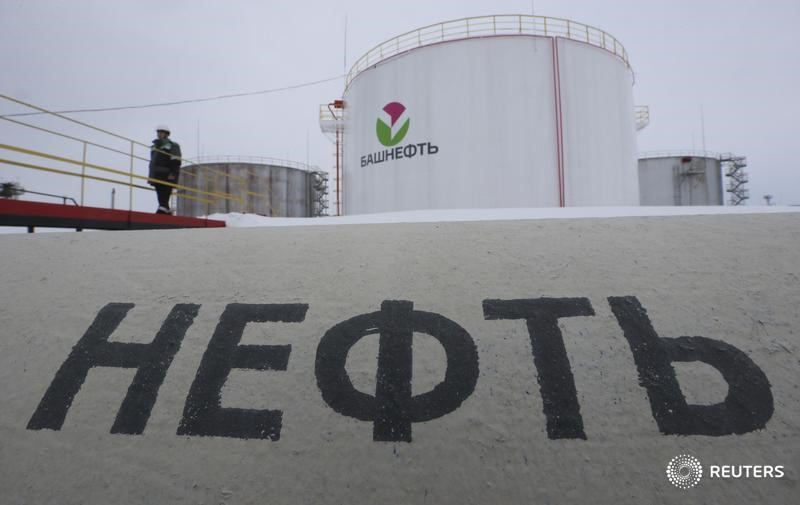By Henning Gloystein
SINGAPORE (Reuters) - Oil prices on Friday were set to fall for the week as surging U.S. output and an expected supply increase from the Organization of the Petroleum Exporting Countries (OPEC) weighed on markets.
Brent crude oil futures were at $70.38 per barrel at 0440 GMT, down 37 cents, or 0.5 percent, from their last close.
U.S. West Texas Intermediate (WTI) crude futures were down 20 cents, or 0.3 percent, at $61.61 per barrel.
Brent is set for a weekly fall of 2.5 percent, while WTI has declined 2.6 percent so far, its second straight weekly drop.
"Oil prices have fallen as the pressure of record U.S. output levels continues to weigh," said Mihir Kapadia, chief executive officer of Sun Global Investments.
U.S. crude oil production reached a record 12.3 million barrels per day (bpd) last week, rising by around 2 million bpd over the past year. U.S. crude exports broke through 3 million bpd for the first time this year, according to data from the Energy Information Administration.
(GRAPHIC: U.S. crude oil production - https://tmsnrt.rs/2VFPX81)
Traders said prices also fell as Russia started sending clean oil through a pipeline towards western Europe, after several countries last week halted imports because of contamination. In Poland, the government released strategic reserves to ensure supply.
"In Eastern Europe, countries have secured supplies to offset shipments halted due to contamination," said Sukrit Vijayakar, director of energy consultancy Trifecta.
In the United States, analysts say supply will rise further as its export infrastructure is improved.
"One of the things that we can see in the near future is the de-bottlenecking of the Permian basin in the U.S. through new pipelines and export capacity. This will connect the world's largest shale basin to the global oil market," said Will Hobbs, chief investment officer for Barclays (LON:BARC) Investment Solutions.
Rising U.S. oil production has helped offset some of the disruptions from U.S. sanctions against Iran and Venezuela, and from supply cuts led by the Middle East-dominated OPEC, which started in January.
Despite these disruptions and sharp oil price rises in the first months of this year, some analysts say the long-term price risk to crude oil is skewed to the downside.
Erik Norland, senior economist at commodity derivative exchange CME Group (NASDAQ:CME), said "the 130 percent rise in U.S. production due to the shale oil revolution" during the past decade had created a strong and constant downside risk to oil prices, which was visible in exchange trading positions.
"Observers of the oil markets might be surprised to discover that during the past decade, out-of-the-money (OTM) put options were more expensive than OTM calls 92.5 percent of the time for crude oil," he said.
"In other words, oil traders have spent much more time during the past decade worried about downside risks than prices heading higher," Norland added.
